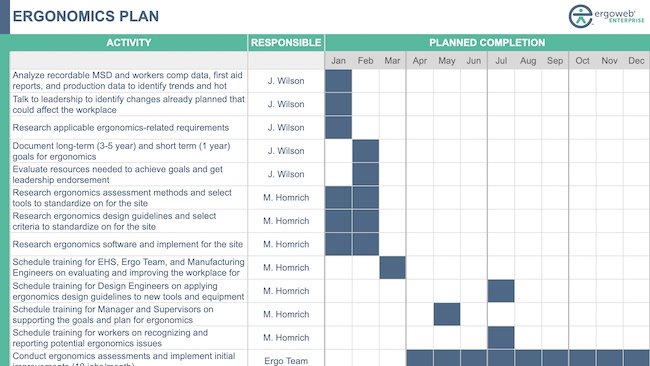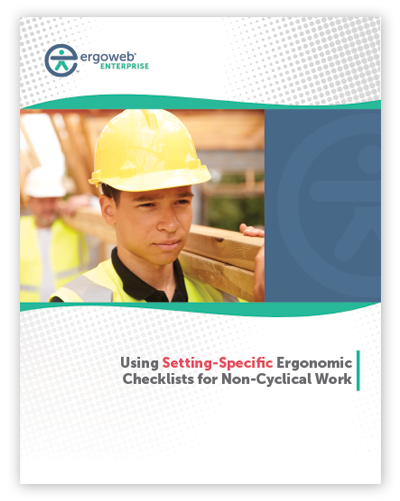Ergoweb® Learning Center
We’ve published and shared thousands of ergonomics articles and resources since 1993. Search by keyword or browse for topics of interest.
Downloadable Guides
Browse Open Access Articles
August 10, 2011
Have you ever been asked "what's the right height for my desk?" To the computer user, this is a simple question demanding a simple answer. To the ergonomist, it's a loaded question, one that requires a patient explanation of the factors that must be considered when setting up a workstation -- including desk height. To the furniture, facilities management and purchasing industries, it's "29 inches," which ergonomists know can't possibly be right for all people ...
August 3, 2011
If ergonomics is seen as a cost, many will reject it. If it is seen as an improvement opportunity with measurable gains, many will embrace it. This article points to cost-benefit analysis tools that can help you prove the value of ergonomics to others.
August 3, 2011
Once again, the Puget Sound Human Factors and Ergonomics Society has put together a great line-up of speakers for this year
August 2, 2011
This article, reprinted from The Ergonomics Report, summarizes an internal corporate study of 6200 financial services call center staff found that over a three-year period employees in non-adjustable workstations had 5-times more injuries and 20 times more Worker Compensation injury costs, as compared to employees in user-adjustable workstations. Furthermore, the non-adjustable workstations had higher costs associated with routine moves and making ergonomic adjustments.
July 19, 2011
The seeds for Ergoweb were sown nearly 19 years ago. Peter Budnick reviews Ergoweb's rich history, sharing a rare screenshot from a 1994 web site, and reaches out to customers and community members to help the company chart its future.
July 6, 2011
The Human Factors and Ergonomics Society invites you to attend the 2012 Symposium on Human Factors and Ergonomics in Health Care, to be held March 12
July 5, 2011
Researchers Blackstone, Karr, Campo and Johnson investigated the physical exposure differences between children and adults when using standard sized input devices and smaller input devices. The results suggest something that ergonomists are well aware of -- something we hope designers and manufacturers will one day embrace -- One size does not fit all. The study investigates the effect of computer input device size on performance, posture and force.
June 28, 2011
Researchers Boda, Bhoyar and Garg conducted a study with the intention to validate the ability of the NIOSH Revised Lifting Equation and the University of Michigan 3D Static Strength Prediction Model (3DSSPP) to predict the future occurrence of work-related low back pain (WLBP). In this research review reprinted from The Ergonomics Report, reviewer Peter Budnick describes the results as mixed, bringing into question both the methods used to validate complex human-system models, and the ability of ergonomists to evaluate lifting/lowering tasks and predict associated risk of WLBP with certainty.
June 23, 2011
"Lean" management philosophy is an evolving systematic approach to building and maintaining a viable organization with sustainable processes. Many organizations are pursuing Lean to remain competitive, but unfortunately, many misunderstand the necessary ingredients for a true Lean Journey, including the most important principle, Respect for People. In this reprint from The Ergonomics Report, Peter Budnick explains why ergonomists are uniquely qualified to lead and participate in successful Lean Journeys, noting that ergonomics IS Respect for People, and our contributions are critical to optimizing organizational performance.






